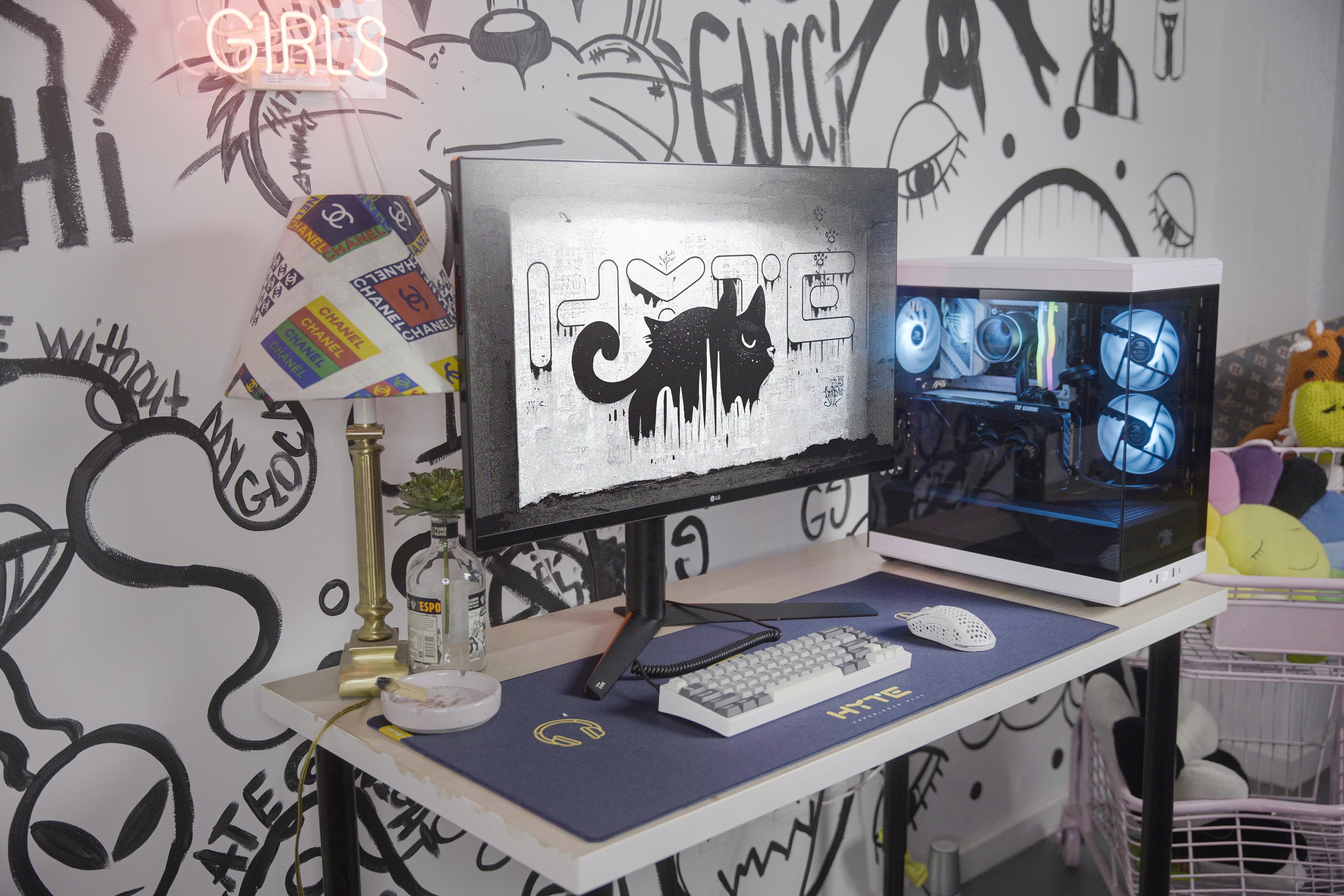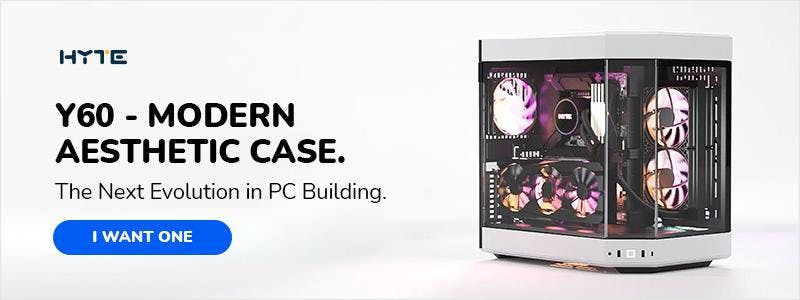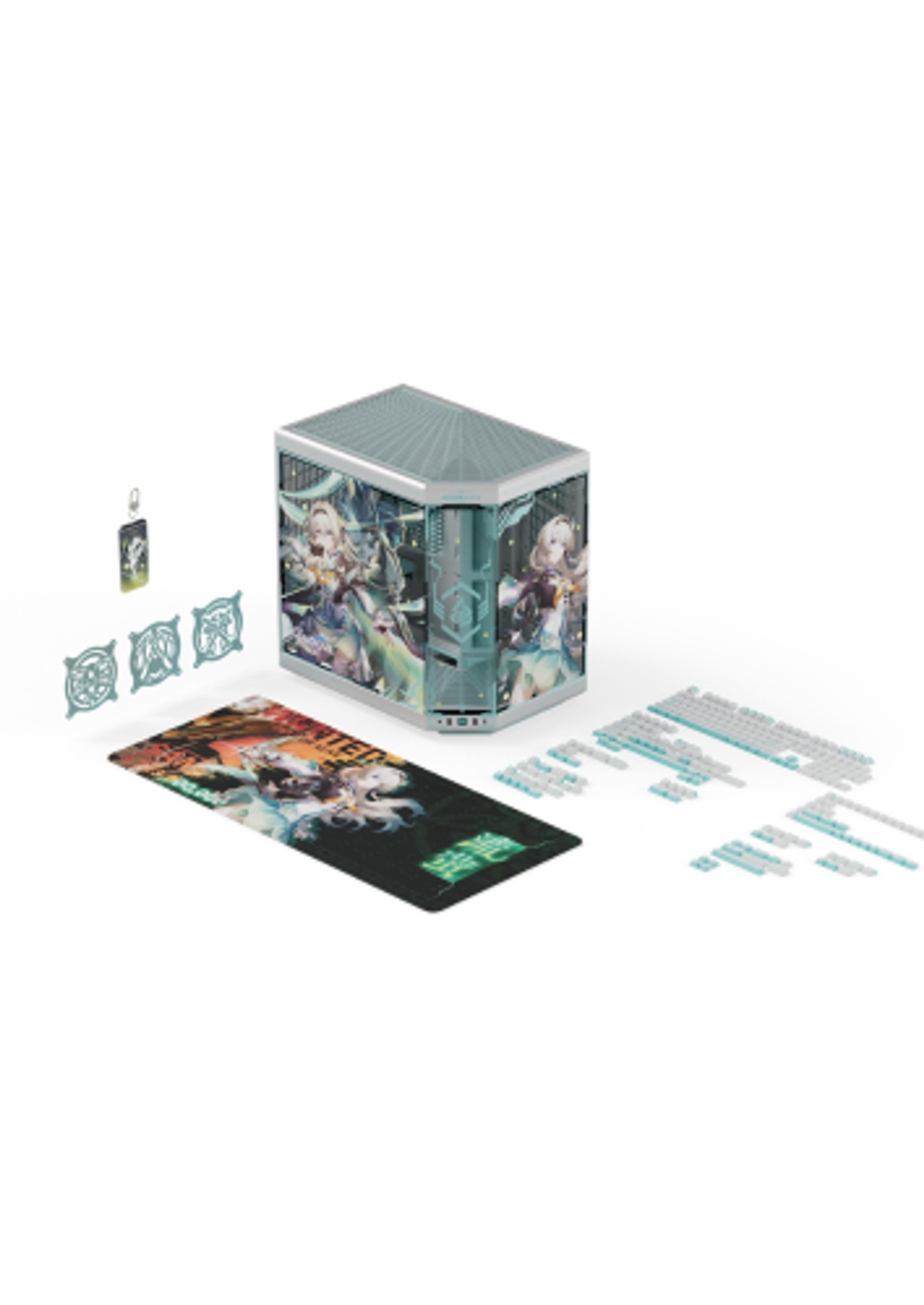
Parts Needed to Build a Gaming PC
A high-powered gaming PC can make all the difference in the gaming experience. Building a gaming PC is rewarding, allowing for customization in every aspect, whether it is a gaming PC that can handle certain games or a more compact PC. Before embarking on this project, though, essential parts are necessary for assembling a gaming PC. These components range from the motherboard and CPU to peripherals like monitors and keyboards, which also need to be compatible with each other for a successful build.
Preparing to Build a Gaming PC
Aside from the specific parts of the computer, what do you need to build a PC? What are some things to consider while preparing to complete a PC build? Before shopping for gaming PC components, here are three factors to remember:
- Budget: Having a clear budget before shopping will help prevent overspending, especially when on a tight budget. If a part is outside the budget, it is always possible to upgrade individual components in the future.
- Compatibility: All components being compatible is vital for a functional computer, especially for parts interacting with each other directly, such as the motherboard and CPU. The best way to do this is to list the specific components and cross-reference their compatibility.
- System Requirements: If to play a specific game or run certain software on a PC, check the recommended system requirements to ensure the build meets these intended usage's demands.
Tools needed for the build
Besides the parts needed to build a gaming PC, there are tools required to complete the build, along with a clean workspace. To make it easier, here are some tools to have on hand:
- Screwdriver set
- Anti-static wrist strap
- USB Flash Drive (as storage for the installer for the specific operating system)
- Cable ties
- Thermal paste applicator (if not pre-applied)
- Cleaning supplies (microfiber cloth, compressed air)
- Flashlight
Grounding oneself before handling any PC parts (the purpose of the anti-static wrist strap) is vital to avoid damaging PC components with electrostatic discharge (ESD). Although an anti-static wrist strap isn’t necessary for grounding, having one makes it easier to do so.

List of PC Components
Building a PC is about customizing it based on its intended purpose, and keep in mind that while each part has a distinct role, the synergy between them ultimately defines the PC's capabilities. This gaming PC parts list provides an overview of what is needed and what to look for when researching each component.
Motherboard
The motherboard is the central hub connecting all the components, so it must be compatible with the CPU and support any necessary features, such as the number of RAM slots, USB ports, and expansion slots. Another aspect of compatibility to think about is not just with the current parts but also with any upgraded components in the future. CPU compatibility is paramount, but also check that the motherboard supports the correct DDR version for the RAM, along with the expansion and storage slots needed for aligning with the hardware needs, and any specialized slots, like NVMe or PCIe 5.0, must match the device requirements.
Motherboards come in different sizes (form factors), catering to specific needs and preferences. The most common form factors include Extended ATX, ATX, microATX, and Mini-ITX. However, looking into ITX is a good idea for anyone who wants a more compact setup. Extended ATX is the largest, providing ample room for expansion with eight RAM slots to accommodate up to 128GB of RAM. ATX motherboards are slightly smaller and typically feature four RAM slots, while a microATX board offers a balanced size with similar RAM slot capacity. The Mini-ITX is the smallest, boasting compactness but typically having only two RAM slots. Choosing the right size for a PC build depends on what is currently required and expansion plans.
Voltage regulation is another pivotal aspect of motherboard performance, as efficient voltage delivery to components leads to stable operation and longevity. Other necessary factors are connectivity options, such as built-in Wi-Fi capabilities.
CPU
Another one of the PC build parts needed is the CPU or central processing unit. The CPU is the brain of the PC, and it executes the instructions necessary for seamless program execution. A CPU should have enough power to handle any gaming needs, meaning a model with multiple cores and high clock speeds.
The ideal CPU focuses on key performance indicators to handle gaming. For example, look for an Intel® Core™ processor with a high Max Turbo Frequency, which determines the maximum clock speed achievable through Intel Turbo Boost technology. This feature directly influences single-threaded performance and boosts FPS in demanding games. The CPU should also have a high number of cores and threads to allow for handling multiple applications simultaneously without compromising system responsiveness. Essentially, it ensures the system can process the game's demands alongside other tasks, maintaining a smooth and immersive gaming experience.
There are plenty of options for CPUs, depending on needs and budget. AMD and Intel are the primary manufacturers. AMD Ryzen processors blend power and affordability, or for a more substantial CPU, Threadripper workstation CPUs provide ample strength.
Also, remember that some CPUs may need third-party CPU coolers for optimal thermal performance, like AIO liquid coolers, which are efficient and quiet solutions for managing CPU temperatures.
RAM
RAM is the system's short-term memory, feeding the CPU with the necessary instructions and data at lightning speed. It eliminates the need for the CPU to consistently fetch information from slower storage devices, such as hard drives or SSDs, which accelerates program execution and enhances overall system performance.
Opt for RAM matching the CPU's speed and capacity to harness a computer's full processing potential. Doing this creates an uninterrupted data flow, enabling the system to function optimally. The two main factors to consider are speed and capacity.
Regarding capacity, aim for at least 16GB of RAM, but consider 32GB for future-proofing the system. When it comes to speed, the higher it is, the faster data transfers between RAM and the CPU, increasing system responsiveness. Lower latency timings also contribute to efficient data retrieval, enabling the system to function with minimal delays.
The RAM should be compatible with the motherboard and CPU to function correctly, so cross-reference the compatibility between these particular parts to prevent any mismatches.
Storage: HDD or SSD
Storage, often viewed as the long-term memory of the system, takes the form of Hard Disk Drives (HDDs) and Solid State Drives (SSDs). While HDDs offer more storage at a lower cost, SSDs provide significantly faster loading times and overall system responsiveness. SSDs perform well as the primary drive for the operating system and any frequently played games.
In the past, HDDs were the more popular device for data storage, but as the landscape has evolved, SSDs ended up being better in performance and reliability. A few advantages to SSDs include faster data access, reduced noise, and enhanced durability. For the fastest loading times, the NVMe (Non-Volatile Memory Express) SSDs are the best solution.
The optimal storage configuration depends on usage patterns and needs. A common strategy is to employ a smaller NVMe or SATA SSD for the operating system and frequently accessed files, complemented by a larger HDD to house bulkier data. This storage combination balances speed and capacity, although it also purchases external storage to provide additional space for backup.
Graphics Card
In terms of gaming PC parts, the graphics card, or GPU, is a cornerstone of gaming performance. It handles the visual elements of a game, so whether it is for navigating fantastical realms or engaging in adrenaline-pumping battles, the GPU brings these virtual worlds to life. Many CPUs have integrated graphics to handle basic tasks, but a standalone GPU unlocks a modern gaming experience.
When selecting a GPU, choosing a midrange or higher-tier GPU is the best way to amplify gaming performance. Any graphics card will work with a motherboard possessing a suitable PCIe slot, although modern motherboards offer high-speed PCIe transfer capabilities for a better level of performance.
Power Supply Unit
The Power Supply Unit keeps the system running by converting electrical energy into the power that fuels gaming and computing endeavors. It is a foundational element ensuring the system's longevity, stability, and optimal performance by making sure every component receives the energy required to perform its designated tasks.
One factor in assessing Power Supply Unit efficiency is modular or non-modular design. A modular Power Supply Unit conveniently connects or disconnects cables as needed, streamlining cable management and enhancing the system's aesthetics. Non-modular counterparts might be slightly more efficient in their power, but the practicality of a modular design often outweighs the difference.
Wattage is another crucial part to consider in a Power Supply Unit. It is the sum of the maximum wattages the components demand. The PSU's output wattage should exceed this sum, ensuring the system has the power to operate.
The '80 PLUS' efficiency rating provides information about the Power Supply Unit's ability to convert AC to DC power. A 'Gold' rated PSU or higher signifies an efficiency level of around 90% or better across all load levels. To help with finding the best Power Supply Unit, use a PSU to ascertain the system's power requirements. The calculator checks that the PSU's wattage aligns with the demands of the components to guarantee stability and prevent power-related issues.
Case
The case provides a space to showcase your creativity while serving the practical purpose of housing all of the other components of a gaming PC. When choosing the case, make sure it’s large enough to accommodate all the parts and has proper airflow for cooling. While many cases have pre-installed fans, it isn't always sufficient to meet the PC’s cooling needs. A general rule of thumb is that the larger the case, the more potential for advanced cooling setups, which is particularly relevant for custom installing cooling loops or high-performance configurations.

Monitor
The monitor is the portal through which a gaming world unfolds, and finding the perfect display leads to an immersive and visually striking gaming experience. A high-refresh-rate monitor with low response times can significantly enhance any gaming experience, and be sure to take into account the resolution and panel type.
There are many options for monitors, although a 1920x1080 monitor resolution suffices for basic gaming. However, upgrading to higher resolutions like 2540x1440 or even 3840x2160 (4K) could be a good idea, depending on the games you like to play.
A well-balanced gaming experience hinges on the synchronicity between the GPU and monitor. Nvidia's G-Sync and AMD's FreeSync technologies serve as the conduits that bridge this gap, combating screen tearing and elevating gameplay to new heights.
Aside from resolution and compatibility with the GPU, consider the monitor's display size and aspect ratio, especially for more visually intensive games.
CPU Heatsink/Fans
As the CPU runs, it generates a lot of heat, which can become problematic if the PC overheats from an insufficient cooling system. Building in a CPU heatsink and fan ensures the CPU remains cool and the system runs without overheating.
The significance of keeping the CPU cool is vital to the longevity and functionality of the system. Overheating can lead to thermal throttling, where the CPU reduces its clock speed to mitigate heat buildup and decrease performance. Moreover, sustained overheating can lead to long-term damage, compromising the lifespan and reliability of the hardware.
While many CPUs come bundled with stock coolers, gaming demands necessitate more robust cooling solutions, ranging from air-based coolers with heat-dissipating fins and fans to sophisticated all-in-one (AIO) liquid cooling solutions.
For first-time PC builders, a reliable fan-based cooling solution is an excellent starting point, as they channel air over a heatsink to extract heat from the CPU. However, when pushing the performance of a PC through overclocking, an AIO liquid CPU cooler is the better option, as it is a self-contained system providing efficient heat dissipation.
Peripherals
Keyboards, mice, and headsets are essential for gaming. Choose peripherals that are comfortable and suited to your gaming style. Peripherals could be considered external accessories to the computer, such as a mouse, a keyboard, and a headset.
Mouse
In gaming, precision reigns, and every click serves as a command, making the mouse vital to the gaming experience. The real touchstone of a perfect mouse lies in its comfort quotient. A mouse should rest naturally in the hand, with a tactile feel of clicks, smooth movement, and an ergonomic design.
Keyboard
The keyboard impacts the comfort of any gaming experience. There are various choices when it comes to keyboards, and each option, from the type of keys to the presence of features like macro keys and RGB lighting, contributes to something suited to your style and purpose.
The first decision is to choose between a membrane keyboard and a mechanical keyboard. Membrane keyboards have a soft, familiar feel, while mechanical switches deliver a crisp sound when typing. Also consider whether a wired or wireless keyboard is best for the PC setup, as well as if macro Keys and RGB Lighting are necessary. Macro keys offer a realm of shortcuts, streamlining tasks with a touch, which is perfect for gaming. RGB lighting transforms the keyboard into a canvas of colors and serves a more aesthetic purpose to the gaming setup.
Importance of Compatibility
The two most important takeaways are the importance of PC parts' compatibility with each other and opting for components that allow for future upgrades. For example, choose a motherboard with extra RAM slots and expansion options so that the case has room for additional storage and cooling solutions without overhauling the entire system. Or, for anyone looking to build a small form factor PC, understand how it might impact components and their compatibility.
Every component has its own set of requirements, from socket types to memory compatibility, power requirements, and even form factors. Reading through the manufacturer's websites for the specific components helps with understanding the compatible motherboard chipsets and associated hardware while providing invaluable insights into a PC's potential. There are also specific websites focusing on component compatibility.
Where to Buy PC Parts
There are many places to purchase PC components, including online retailers, local electronics stores, and specialized PC hardware shops. One place online you can buy hardware is HYTE, which has top-of-the-line components at reasonable prices.
Featured Posts

Black Friday Gaming Gear & PC Deals 2025
HYTE Black Friday sales are here, and we’re excited to share the amazing deals we’ll be offering this year! Our Black Friday sales event is your chance to save big on some of our most popular products. From November 20th through December 2nd, enjoy incredible discounts on PC cases and gaming accessories that bring both performance and style to your setup. If you’re looking to upgrade, now’s the perfect time to do it with HYTE.

Official HYTE x Honkai: Star Rail Firefly Collection!
The stars have aligned, and the Official HYTE x Honkai: Star Rail Firefly Collection is ready for launch.

HYTE's 4th Anniversary Sale!
We’ve come a long way, and it’s all thanks to you! To celebrate HYTE’s anniversary, we’re giving back with a limited-time Anniversary Sale from Oct. 5 to Oct. 7.

HYTE X50 & X50 Air Pre-Orders Are Now Live!
The X50 redefines typical PC cases with a unique curved design and performance-driven elements. Pre-order the X50 and X50 Air NOW!
